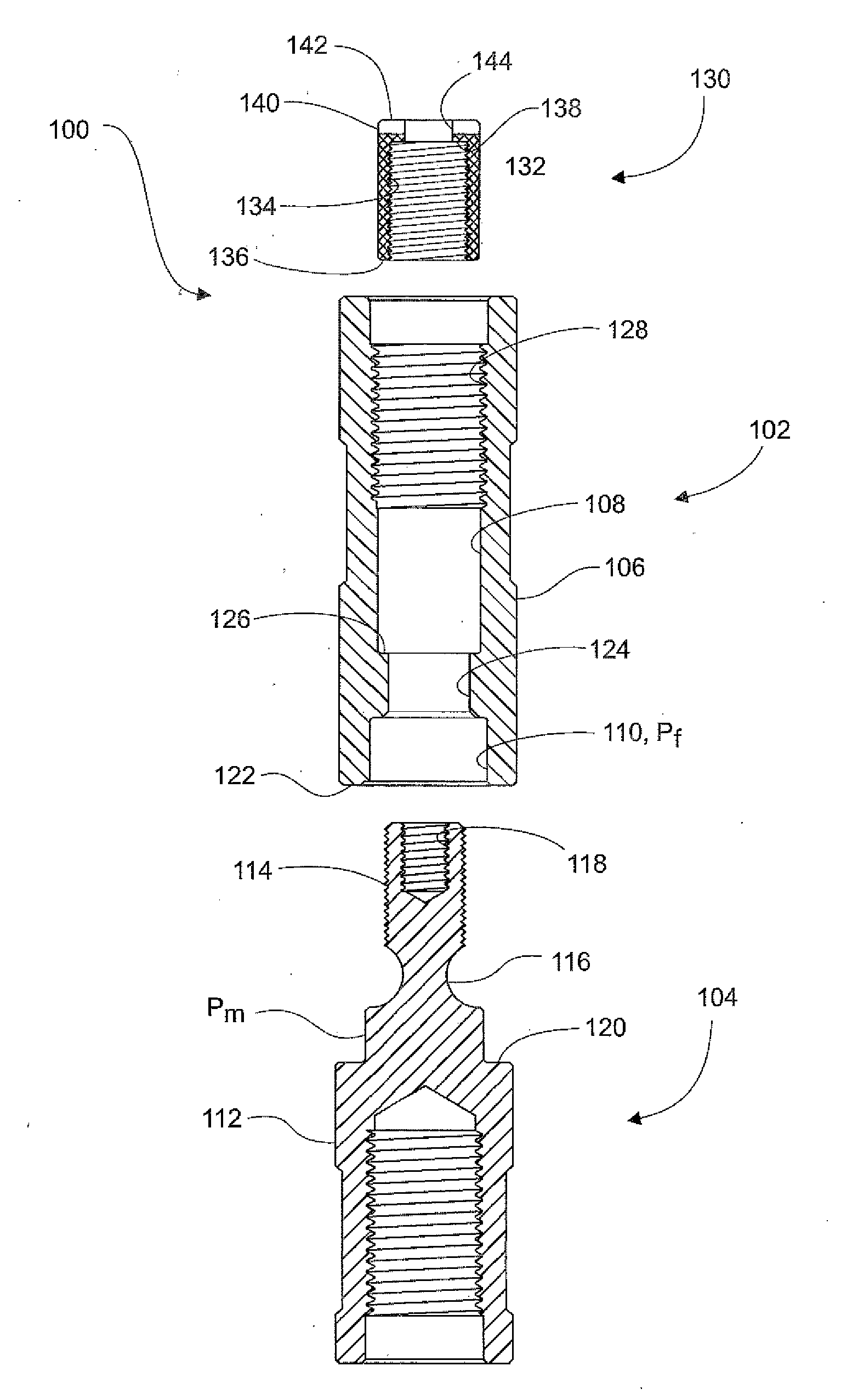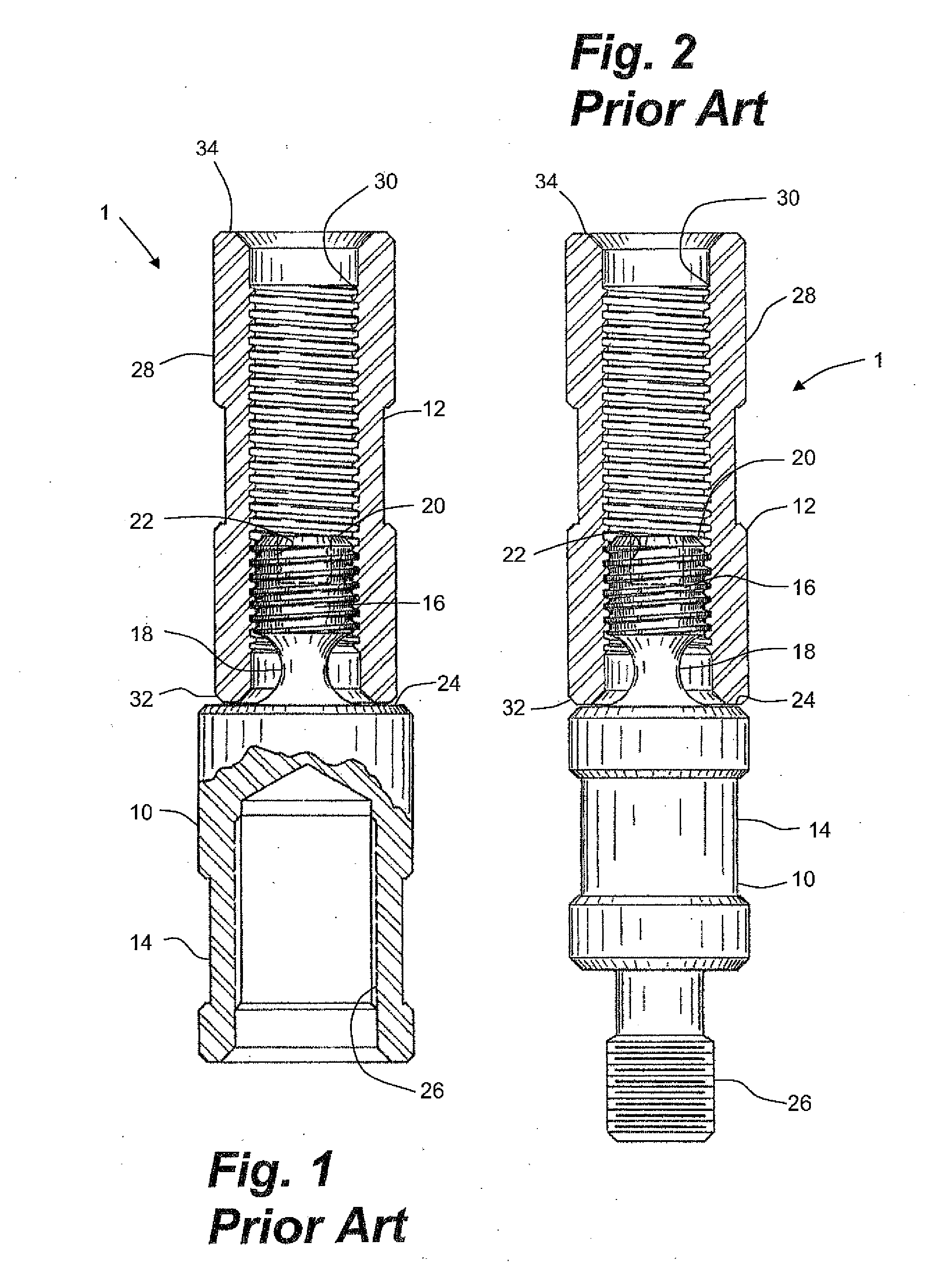Shear coupling assembly for use with rotary and reciprocating pumps
a technology for rotary and reciprocating pumps and shear pins, which is applied in the direction of screw, load-modified fastener, threaded fastener, etc., can solve the problems of prone to premature fatigue of shear pins, difficulty in retrieval, and difficulty in ensuring the safety of the pump, so as to improve fatigue resistance
- Summary
- Abstract
- Description
- Claims
- Application Information
AI Technical Summary
Benefits of technology
Problems solved by technology
Method used
Image
Examples
Embodiment Construction
Embodiments of the invention relate to improvements to prior art shear coupling assemblies to permit use with both reciprocating and rotary pump applications. A description of a conventional shear coupling assembly and method of assembly is provided to assist in understanding embodiments of the invention and the advantages therein.
Prior Art Shear Coupling Assembly
Having reference to FIGS. 1 and 2, a conventional prior art shear coupling assembly 1, applicable to reciprocating pump applications only, comprises two members, a pin coupling member 10 and a box coupling member 12. Either of the pin or box coupling member 10, 12 can be connected to either of a pump or a rod string (not shown) for permitting connection therebetween.
The pin coupling member 10 comprises a cylindrical body 14 having an insert member 16 with external threads extending axially outwardly therefrom and connected to the body 14 by a shear neck 18 typically having a relatively reduced section. The insert member 16 ...
PUM
| Property | Measurement | Unit |
|---|---|---|
| pressure angle | aaaaa | aaaaa |
| areas | aaaaa | aaaaa |
| tension | aaaaa | aaaaa |
Abstract
Description
Claims
Application Information
 Login to View More
Login to View More - R&D
- Intellectual Property
- Life Sciences
- Materials
- Tech Scout
- Unparalleled Data Quality
- Higher Quality Content
- 60% Fewer Hallucinations
Browse by: Latest US Patents, China's latest patents, Technical Efficacy Thesaurus, Application Domain, Technology Topic, Popular Technical Reports.
© 2025 PatSnap. All rights reserved.Legal|Privacy policy|Modern Slavery Act Transparency Statement|Sitemap|About US| Contact US: help@patsnap.com



